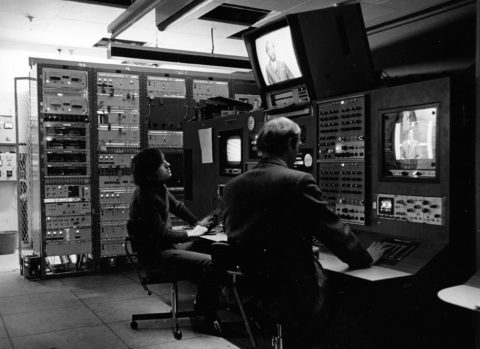This is part 14 of Colin Pierpoint’s blog about his BBC career:
I transferred into Communications in Birmingham in 1971 after completing the Grade C Engineering Course, and a year’s attachment to the Engineering Training Department at Wood Norton. In 1975 I got another secondment as a Lecturer for a year, and then after returning to Comms, a vacancy arose in 1977 for Communications Supervisor and I applied and got it. This was the job I really wanted in Manchester. I also had my sights on ETD, but at the time they wanted memberhip of an Engineering Institution on applications for Lecturers. I had been studying for an Open University degree with this in mind, but the OU at that time did not give the required qualification of “CEng” (Chartered engineer) at the time.
So from 1977 until 1980 I continued working as Communications Supervisor in the Comms Centre at Pebble Mill. An exciting evening was when the “Song for Europe” programme was broadcast live, with voting around the British Isles to choose the entry for the Eurovision Song Contest. Vision circuits from Manchester, Glasgow and Norwich were passing through the Birmingham Comms Centre. There was tie for first place so the regions had to vote again at short notice. Just as this was announced , I saw the Norwich picture lose sync (start breaking up on the screen). I said to one of my staff, put an extra equaliser in the circuit, and just twiddle the knobs until the sync pulse look square. He did this quickly and seconds later they cut to Norwich for their vote.
It was nice to be trusted by TAR staff (Television Apparatus Room, who adjusted the camera channels for studios A, B and C). Comms were often the only engineers in Pebble Mill in the evening and David Stevens would sometimes ask me to clear a fault. Usually I could do a tweak of the camera control unit, which I always reported to TAR staff the next day. One fault I failed to rectify: there was shading across the Midland Symbol C (the rotating world). No matter what I adjusted; iris or target volts, I could not get the image over the whole field, [for the technical readers, the monocrome output went into an inlay switcher, and parts of the image would disappear as I adjusted]. So next day the TAR staff told me what the problem was. The bulb lighting the bottom of the symbol had blown! Too technical for me I am afraid.
Colin Pierpoint
